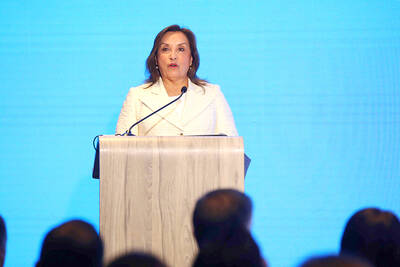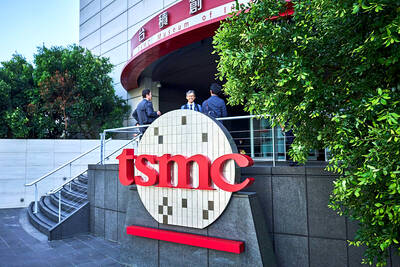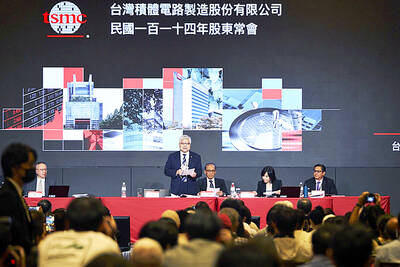Microsoft’s mighty servers were overwhelmed on Friday as computer users worldwide rushed to download a free test version of a Windows 7 operating system being groomed to succeed Vista.
A virtual line formed on the Internet in the hours before the planned release of Windows 7 “beta” software at 12pm local time in Microsoft’s headquarters in Washington State.
“There was a line of people waiting online, so the noon release became an about-noon release,” a Microsoft spokesman said while showing off the company’s latest innovations at the Consumer Electronics Show in Las Vegas.
A flood of requests slowed Microsoft industrial-strength computers, causing delays and disappointments.
The window for downloading the test-version of Windows 7 closes the last day of this month, Microsoft said.
The software giant wants feedback from users to refine the new operating system, but doesn’t plan to change or add features.
“We got ourselves in a little trouble with Windows Vista; it became a bag of mixed things and didn’t really figure out what it was about,” said Mike Ybarra, general manager of Windows products at Microsoft.
“There was a lot of feature creep. You had people saying ‘Let’s change this and that.’ Windows 7 has been very disciplined,” Ybarra said.
Analyst Michael Cherry of private firm Directions On Microsoft said he was impressed with the way the software giant “kept its enthusiasm under control.”
Microsoft improved the Vista operating system while making sure it was “backward compatible,” essentially that it would work with older software.
Vista was such an advance over Windows XP that it clashed with software people already used and previous generation computers.
“Microsoft is making the kind of evolutionary changes they need without the revolutionary changes that break things,” Cherry said.
Microsoft has been secretive about when a finished version of Windows 7 would be ready.
Cherry said he believed the goal was to get it to market in time to be pre-installed on new computers sold during the prime US back-to-school and year-end holiday shopping seasons this year.
Windows 7 streamlines everyday tasks, cut boot-up times, extend battery life and make it simple to weave “smart” devices into home networks, Microsoft chief executive Steve Ballmer said.
Windows 7 also lets users customize a “ribbon” panel at the base of a computer screen with icons for programs and files they want to quickly access.
A ghost preview of what is in the application or file appears as cursors move across ribbon icons, and “jump lists” pop up offering links to exact spots people want to reach in computers or on the Internet.
“The concept is to give people single click access to applications they use most often and two-click access to files,” Ybarra said while demonstrating Windows 7 in a CES meeting room. “You don’t have to launch a browser and navigate to a Web site. You can just click on an icon.”
Dragging a cursor to a bottom corner of a desktop makes all open windows transparent so computer users can easily get to what they want underneath without having to close or minimize screens.
A Home Group feature simplifies networking home computers, so family members using different machines in a house can share things like printers and music or video files.
Device Stage in Windows 7 automatically fetches and presents support and set-up information for mobile telephones, MP3 players, digital cameras or other gadgets plugged into computers.
Ybarra’s favorite new feature is “Play To,” which lets music, video or pictures stored on one computer be accessed by other “smart” devices in home networks.
“Ever since I caught my 10-year-old son watching videos and listening to music on his computer instead of doing his homework I’ve kept all those media files on my computer,” Ybarra said. “Play To lets me make sure the work is done before the play begins.”
Windows 7 is designed to let computer makers build touch-screen capabilities into machines as controls evolve beyond the traditional mouse and keyboard.
Speech features in Vista 7 adapt to the needs of visually-impaired users by letting computers “read” aloud items scrolled over on desktops and even be operated with voice commands, Ybarra said.
The Windows 7 beta is available in English, Arabic, Russian, Chinese and German.
Microsoft is likely eager to leave behind Vista, which has been disparaged and avoided since its release in early 2007.
“Windows 7 is going to be a better step up from Vista than Vista was from XP,” analyst Matt Rosoff of Directions On Microsoft said. “I think the naming change to Windows 7 is definitely trying to indicate a fresh start.”

With an approval rating of just two percent, Peruvian President Dina Boluarte might be the world’s most unpopular leader, according to pollsters. Protests greeted her rise to power 29 months ago, and have marked her entire term — joined by assorted scandals, investigations, controversies and a surge in gang violence. The 63-year-old is the target of a dozen probes, including for her alleged failure to declare gifts of luxury jewels and watches, a scandal inevitably dubbed “Rolexgate.” She is also under the microscope for a two-week undeclared absence for nose surgery — which she insists was medical, not cosmetic — and is

CAUTIOUS RECOVERY: While the manufacturing sector returned to growth amid the US-China trade truce, firms remain wary as uncertainty clouds the outlook, the CIER said The local manufacturing sector returned to expansion last month, as the official purchasing managers’ index (PMI) rose 2.1 points to 51.0, driven by a temporary easing in US-China trade tensions, the Chung-Hua Institution for Economic Research (CIER, 中華經濟研究院) said yesterday. The PMI gauges the health of the manufacturing industry, with readings above 50 indicating expansion and those below 50 signaling contraction. “Firms are not as pessimistic as they were in April, but they remain far from optimistic,” CIER president Lien Hsien-ming (連賢明) said at a news conference. The full impact of US tariff decisions is unlikely to become clear until later this month

GROWING CONCERN: Some senior Trump administration officials opposed the UAE expansion over fears that another TSMC project could jeopardize its US investment Taiwan Semiconductor Manufacturing Co (TSMC, 台積電) is evaluating building an advanced production facility in the United Arab Emirates (UAE) and has discussed the possibility with officials in US President Donald Trump’s administration, people familiar with the matter said, in a potentially major bet on the Middle East that would only come to fruition with Washington’s approval. The company has had multiple meetings in the past few months with US Special Envoy to the Middle East Steve Witkoff and officials from MGX, an influential investment vehicle overseen by the UAE president’s brother, the people said. The conversations are a continuation of talks that

CHIP DUTIES: TSMC said it voiced its concerns to Washington about tariffs, telling the US commerce department that it wants ‘fair treatment’ to protect its competitiveness Taiwan Semiconductor Manufacturing Co (TSMC, 台積電) yesterday reiterated robust business prospects for this year as strong artificial intelligence (AI) chip demand from Nvidia Corp and other customers would absorb the impacts of US tariffs. “The impact of tariffs would be indirect, as the custom tax is the importers’ responsibility, not the exporters,” TSMC chairman and chief executive officer C.C. Wei (魏哲家) said at the chipmaker’s annual shareholders’ meeting in Hsinchu City. TSMC’s business could be affected if people become reluctant to buy electronics due to inflated prices, Wei said. In addition, the chipmaker has voiced its concern to the US Department of Commerce